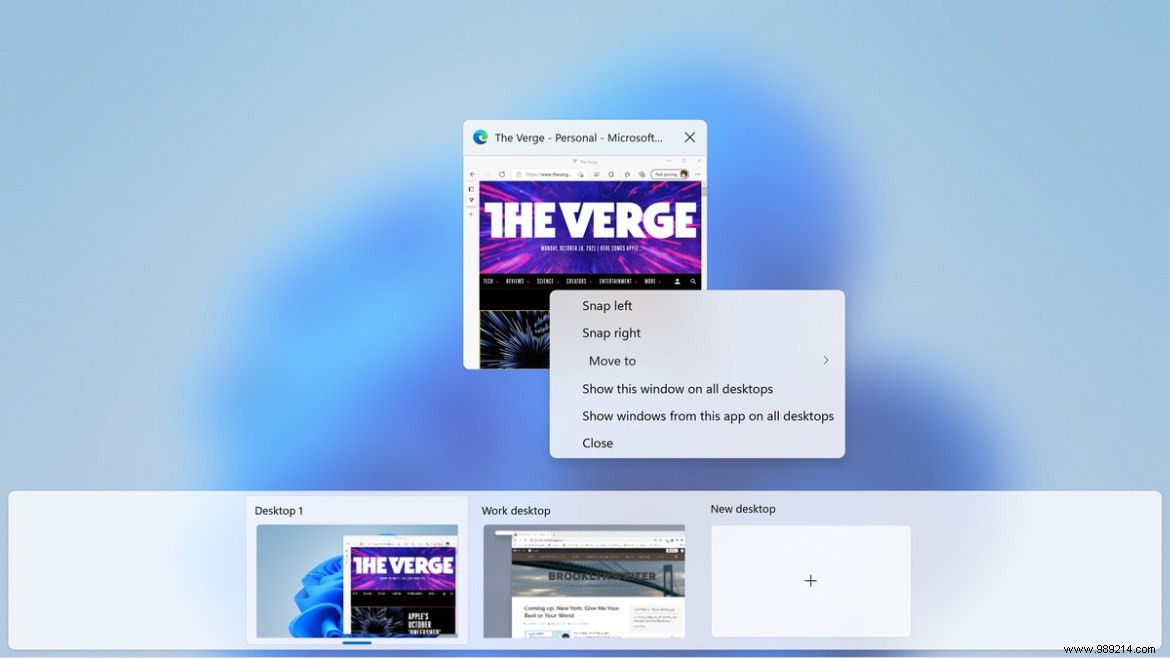Virtual desktops are not new to Windows. In Windows 10, it was simple to create a separate desktop so that, for example, you could have one desktop for one project and a second for another, or one for your work and a second for your personal apps.
SummaryCreate a virtual desktopPersonalise your desktopsChoose a different wallpaperName your desktopReorganize your desktopsUse the same application on different desktopsHowever, in Windows 11, there has been an upgrade. Now, you can also have a different wallpaper for each desktop, making it easier to tell them apart (and giving you a different vibe, depending on what you're using them for). And there are a number of other features that make using virtual desktops easy and efficient. Note that some of them were introduced in Windows 10, but with the new features of Windows 11 they are a handy toolkit.
To create a new virtual desktop:
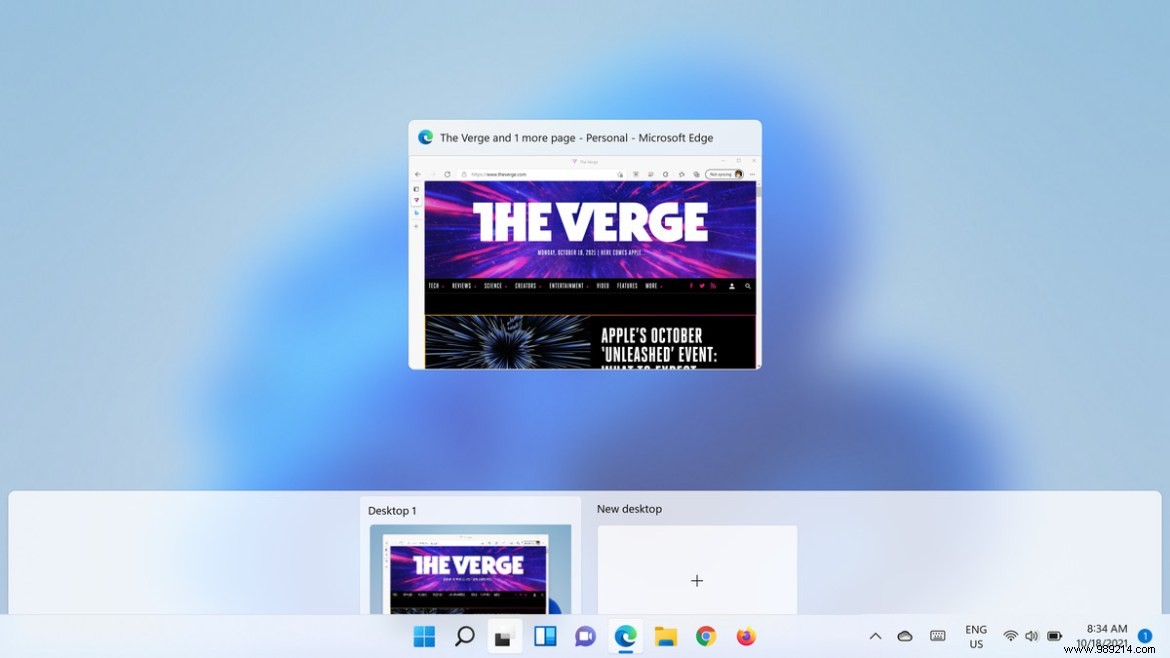
You can also use the key combination Win+Ctrl+D; in this case, you will immediately find yourself in your new office.
You can now place different applications on your separate desktops. Switch between desktops by clicking the "Task View" icon. (You can also move around using the familiar Alt-Tab key combination, which will take you to all the apps on one desktop, then to the apps on the next.)
To delete a desktop:
With Windows 11, you can now customize your desktops, making it easier to dedicate them to a separate function. There are several ways to do this.
You can have a different background for each virtual desktop. It's quite simple:
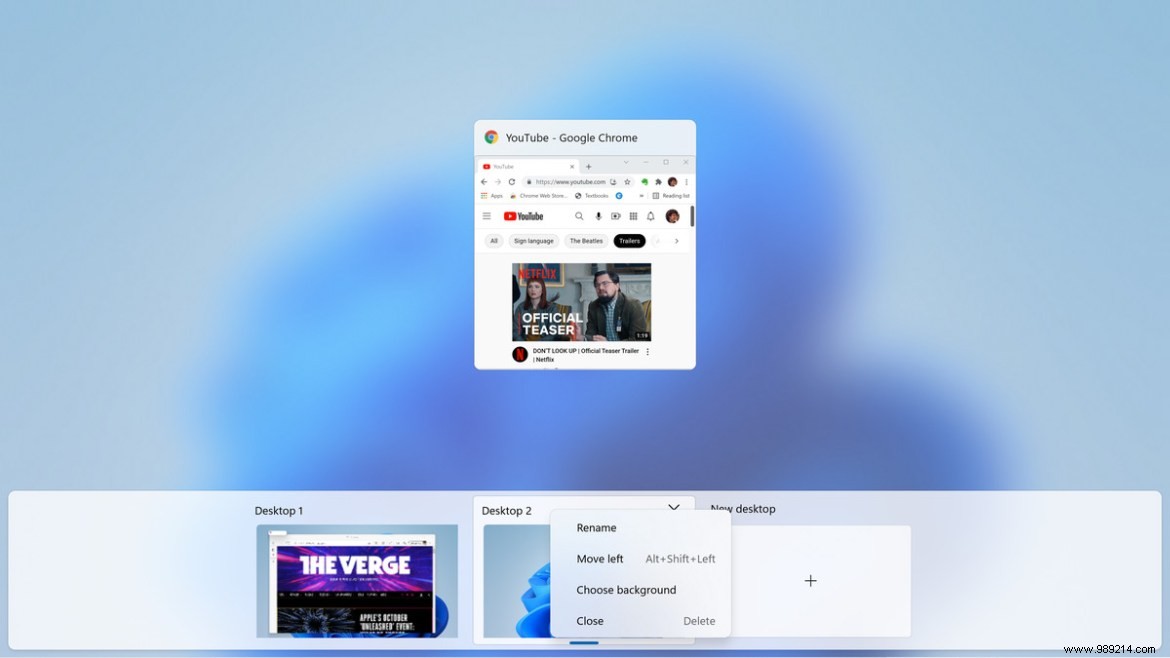
This will take you to the Personalization> Background page, where you can choose an image for your background, a solid color, or set up a slideshow. You can then browse through your photos to choose the image or images to use and decide what type of adjustment you want for your image (for example, you can mosaic or stretch the image).
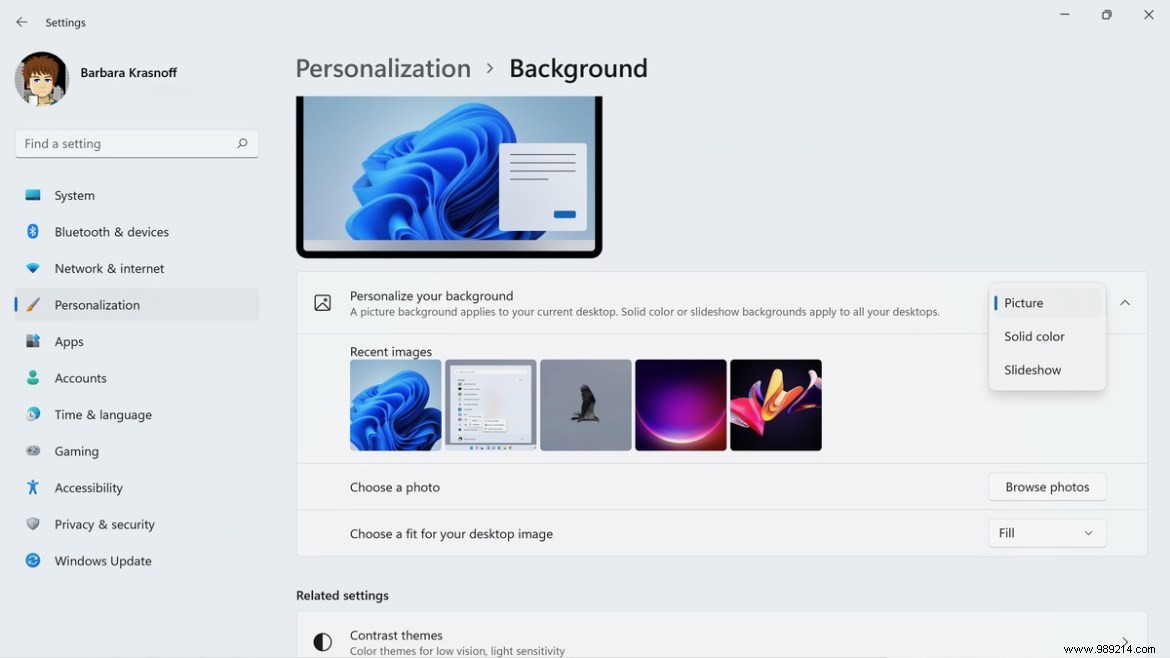
Your desktops will automatically be given the rather boring titles of "Desktop 1", "Desktop 2", etc. You can change this easily by giving each desktop a name.
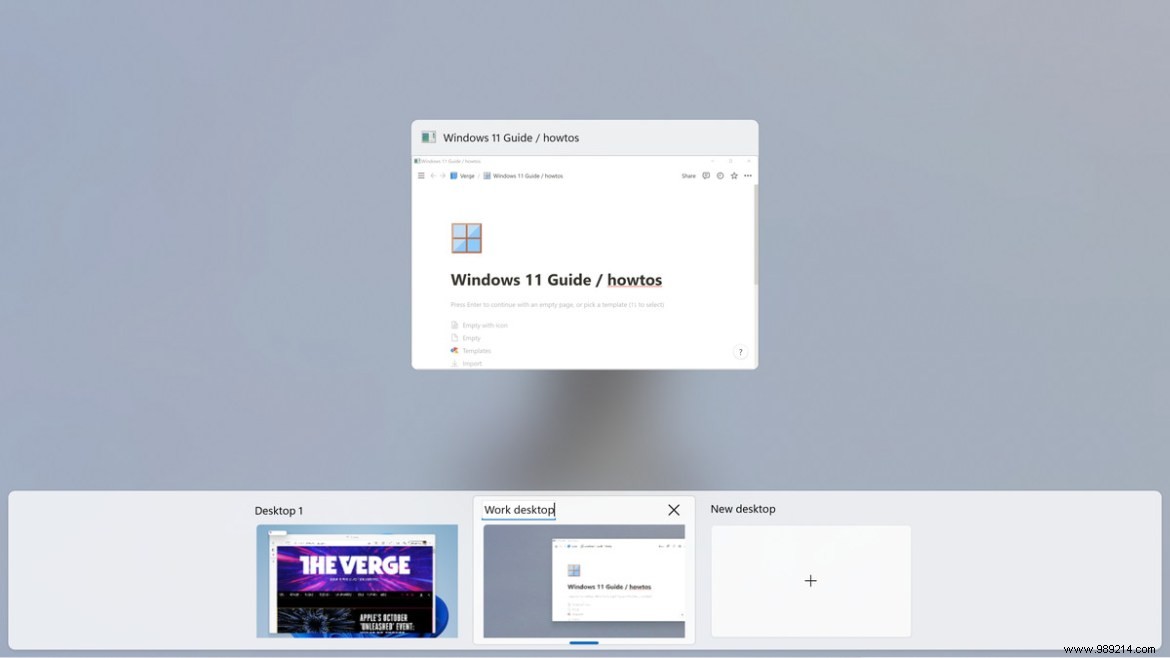
You may want to change the order of the desktops to make it easier to remember which to use and when. It is also very simple.

If you are already using an application on one desktop and you open it on another, you will be using a different version of that application. For example, you can use Chrome to view Twitter on one desktop and search on another. (Be aware that some applications may not yet work this way - for example, when I tried to open Notion on a second desktop, my computer jumped to the desktop where it was already open.)
Although this is convenient, you may want to run the same application with the same data on both or all of your desktops. (Note:This isn't new to Windows 11, but it's good to know.) To do this:
